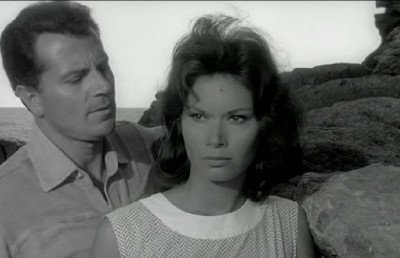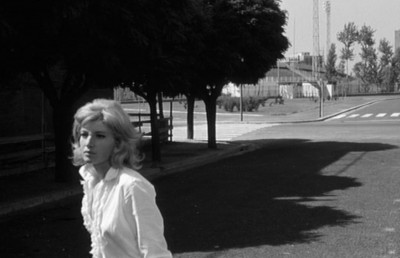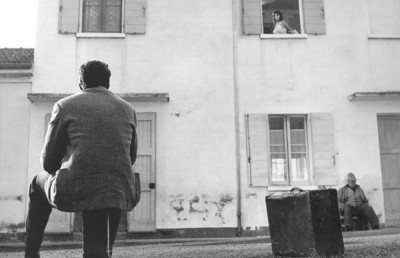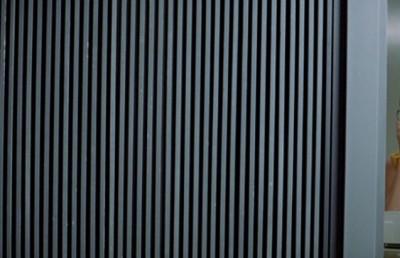Realism and Reality in Antonioni’s Profession: Reporter
as dramatizing the Nietzschean notion of the “power of the false”
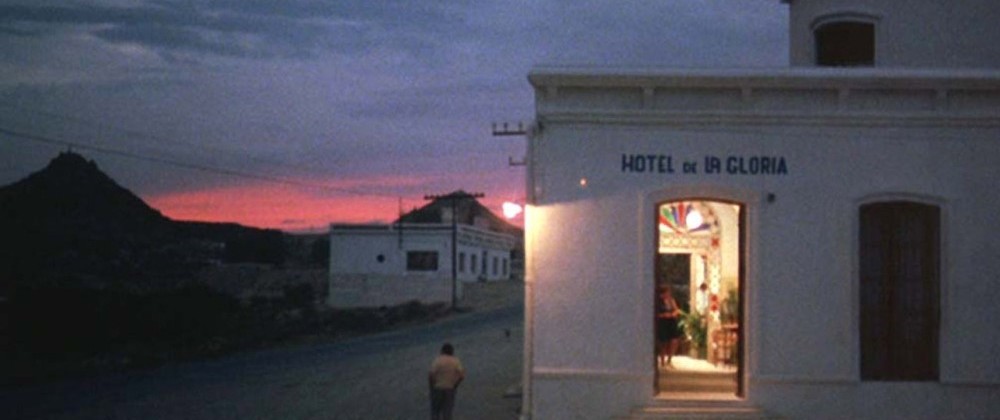
During a professional trip in a North African country, doing investigative research on guerrilla freedom-fighters, reporter David Locke (Jack Nicholson) spontaneously exchanges his identity with the dead man (a gun runner named Robertson, played by Charles Mulvehill) in his neighboring hotel room. While his wife is trying to “reinvent” him (to use the words from the film) through his producer’s editing of the documentary footage he took in the desert, he, assuming the life of the dead man, meets a ‘girl’ whose name is never given (even in the credits Maria Schneider is mentioned as ‘Girl’) and to whom he never introduces himself, and makes a long, apocalyptic journey across the disorientating, hallucinatory lands of European metropolises, on a playful, hopeless effort to move away from his existential malaise and trace his spiritual, moral and emotional inner fate.
Antonioni’s narrative discourse falsifies style, fiction, characters and temporal perception and thus dramatizes the Deleuzian cinematic allusion of the Nietzschean “power of the false” notion. By making narrative tempo focus on the remaining of moments of Locke’s life, while skipping over the passage of periods, as well as by presenting Locke being haunted by his past which has spontaneously penetrated an undetermined present, Antonioni consigns plot to the power of memory, which Deleuze defined as being critically instrumental in the narratives of most postwar European directors. According to Deleuze, although memory existed in classical cinema (say, as flashbacks), in modern cinema it has taken up an organic function where the present seems to lapse into the past, or the past to overtake the present. Given that what is actual is present, this new notion of memory confuses the distinction between actual and virtual, past and present. This means that, by being based on irrational linkages (stylistic as well as literal at the level of the film’s plot, as far as Locke’s journey in time is defined by him taking a false identity), Profession: reporter dramatizes a practice of false continuity in which images, according to Deleuze, coagulate and disperse, in which we experience the world as a field of forces.1“In the end, the cinema “trips” into an ambiguity so overwhelming that the imaginary and the real become indiscernible”.2
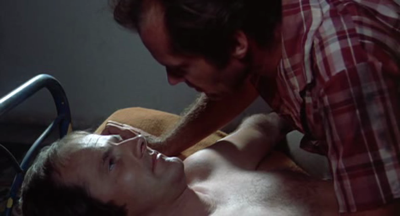
Furthermore, by situating the characters in Deleuzian “any-spaces-whatever” (even though we can gather from the plot where the action takes place, it seems almost irrelevant to the story’s spatial orientation), the film is characterized by an ambiguity that confounds the very category of the real. In terms of both narrative and philosophy, realism is essentially based on a distinction between the subject and the world, but here determinate situations have been replaced by “any-spaces-whatever”. According to Deleuze, in the tracks of postwar deconstruction and reconstruction there is no longer any good, any justifiable, reason for the rational linkage of images, and so the cinema undergoes remarkable mutation. The “any-spaces-whatever”- irrational, disconnected, aberrant, schizophrenic spaces – no longer obey laws of traditional, commonsensical causality. In the film, the incompatibility of the film’s hodological space, transformed into a no-place notion, a “true” utopian zone – the literal meaning of the word “utopia” in Greek is “no place” (David Locke, waiting in empty squares, rarely meets “his” appointments) – is symbolically reproduced at the fictional level by the fact that the hero first meets the intermediary with his other, virtual self, the girl, in the uninhabitable, “impossible,” utopian Gaudi houses. According to Deleuze, in this kind of disorientating spatio-temporal conditions, situations lose their objective assurance, hence the emergence of pure optical and sonic images that have been delinked from the chronological series of the present, cut off from motor extension, from action. This way, “the characters are no longer those who act, but rather those we see”.3 In the film, Nicholson emblematically incarnates this kind of “new race of characters” “who are compelled to witness the world, yet who are entirely unsure of what they witness, lost in the thrall of an ‘uncertainty principle’”.4
By dramatizing the Deleuzian notion of the virtual crystal circles of his ‘time image,’ where narration ceases to be truthful and emerges as a power of the false,5 as well as by confusing character identities, both at the level of the plot and intra-diegetic discourse (Locke’s wife always uses the pronouns “he” or “him” when speaking, without making clear for the viewer whether she’s referring to David Locke or Robertson), Antonioni makes cinema “grasp […] not the identity of a character, whether real or fictional, through his objective and subjective aspects” [6] but “the becoming of the real character when he himself starts to ‘make fiction,’ when he enters into ‘the flagrant offence of making up legends’ and so contributes to the invention of his people,” [7] reconstructing the true reality-imitating condition of their temporal existence by deconstructing sensory-motor connected realism in conventional time, space, and character ‘correspondences’.
In his two volume work on cinema, Gilles Deleuze, considering concepts as the images of thought, [8] offers a study of the medium under a philosophical angle. We can see his first volume, The Movement-Image, as being connected with the classical notion of Bazin’s so called “analytical decoupage” and his second one, The Time-Image, as concerning the post-war reversal of the subjugation of time to movement. Following Deleuze’s thought, it is possible to note that, since the war, the indirect representation of time gave way to the formation of the direct time-image – a term which rephrases the Bazinian conceptual adequate of the image-fact, [9] having found its way from Renoir to Italian Neorealism through Welles – and is variously described by Deleuze as duration-image, change-image, relation-image, volume-image, all of which is beyond movement itself. [10]
Bazin’s idea of the illusion of realism derived from the transparency of cinematic technique (and less on the political and social conditions of the films’ production or their influence on the themes they are dealing with), a notion depending on an aesthetic factor, is replaced by the Deleuzian concept of the phenomenology of time as captured by the cinematic medium, depending on a philosophical, ontological factor (Augustine’s question “What, then, is time?”). Starting with Kant, Deleuze writes, “time ceases to be ordinary or derived, to become the pure form of interiority, which hollows us out, which splits us, at the price of a vertigo, an oscillation that constitutes time: the synthesis of time changes direction by constituting it as an insurmountable abstraction”. [11] He follows the thought of Bergson – from Matter and Memory (1896) to Creative Evolution (1907) – for whom, as stated in Creative Evolution, “cinema works with two complementary givens: instantaneous sections which are called images; and a movement or a time which is impersonal, uniform, abstract, invisible, or imperceptible, which is “in” the apparatus, and “with” which the images are made to pass consecutively.” [12]
The Deleuzian notion of the time-image, which goes beyond empirical succession of time, meets Ricoeur’s reconsideration of the Augustinian “distentio animi” (his belief that time is a distention or extension of mind) as the simultaneity of past, present and future, in the dialectical movement of the soul between memory, attention and expectation, [13] and brings in the heart of the cinematic sign, which is always in the present, the philosophical notion of the instant as being the image of eternity, which goes from Hegel and Goethe to Kierkergaard and Heidegger. Ricoeur’s concept of the Augustinian allusion of human perception of time “in the transit” [14] (as perhaps the only possible way to measure it), which constructs his “impression image” (image of the present carrying its past where “the important verb is no longer ‘to pass’ but ‘to remain’” [15], being actualized by Antonioni through his insistence on empty spaces which bring about the identity of the mental and the physical, the real and the imaginary, the world and the I, therefore, the human subject’s atemporal empirical allusion of History) brings to mind the Deleuzian reference to the French New Wave, and especially to the descendants of the Italian Neo-realists. In such a non-chronological temporal condition, where the paradox of time is to introduce an enduring interval in the moment itself, the European post-war cinema has situated a new kind of romantic character, being put amidst what Deleuze calls “any-spaces-whatever” where, “even the body is no longer exactly what moves; subject of movement or the instrument of action, it becomes rather the developer of time, it shows time through its tiredness and waitings (Antonioni).” [16]
In the same milieu Pasolini champions the creation of what he calls the “cinema of poetry,” established with an aesthetic technique which he calls “free indirect subjectivity,” a cinematic parallel to the literary notion of “free indirect discourse,” and defines this as “an interior monolog in images” in which “the story is told through the character, and in an absolute interiorization of the system of allusions belonging to the author” [17] (Antonioni’s stylistic device being one such example). In other words, the distinction between what the character sees subjectively and what the camera sees objectively vanishes, in favor of the camera’s internal vision which enters into a relation of simulation [18] (mimesis) with the character’s way of seeing. This way, according to the Deleuzian reading of Bergson’s Matter and Memory, by collapsing the distinction between and subject and object, the film cuts through the deadlock between realism and idealism.19 In Profession: Reporter, the notion of subjective camera or point-of-view vanishes without really obliterating the impression that shots –such as those of bugs on wires or the ceiling fan with its constant, monotonous, almost annoying sound– are representing the psychological mood or moral status of the main character. Antonioni’s emphasis on the hypnotizing constant sound of the ceiling fan in the room where Lock finds his neighbor’s dead body can be read as an epiphany of his mental status during his few num “apocalyptic” moments before taking the decision of changing identities. In a similar way, the close image on a bug on the wall in the Gloria Hotel room can be seen as an attempt of an abstract metaphorical visualization of the “tense awkwardness” of Locke’s last encounter with his lover. Without visualizing the character’s subjective focalization, the image functions as his personal projection onto the world, as a mental investment on the pure actuality of the plot. This kind of disorientating perceptive allusion is very clear at the last sequence with the camera’s “escape” from the window lattice, which visualizes Locke’s spiritual “flight” out into the open, together with Antonioni’s disengagement from the narrative “ready-made” structure in which he had made his character imprison himself. This also confers with what Antonioni himself said in an interview with Gideon Bachmann after the release of The Passenger:
I no longer want to employ the subjective camera, in other words the camera that represents the viewpoint of the character. The objective camera is the camera wielded by the author. Using it I make my presence felt. The camera’s point of view becomes mine (Bachmann, Antonioni, 27).
This merger of the character’s and director’s subjectivities into an objective-like image which Bazin locates in the interaction of aestheticism, realism and reality in the neo-realist films, is transformed, for Deleuze, into Antonioni’s “critical objectivism,” [20] in his inclination to replace action by “indifferent” (without any narrative or dramaturgical function ) displacement of figures in space (amongst an array of European metropolises’ squares). This gives the impression that “the most objective images are not formed without becoming mental, and going into a strange, invisible subjectivity” situating him close to Nietzsche as being “the only contemporary author to have taken up the Nietzschean project of a real critique of morality, and this thanks to a ‘symptomatologist’ method” [ 21], meaning that Antonioni’s objective images follow an impersonal becoming in the story; the narration is manipulating the development of consequences by injecting them with a form of subjective-historical atemporality. The contamination of the two kinds of image brings the whole to the power of the false, where “The story no longer refers to an ideal of the true which constitutes its veracity, but becomes a ‘pseudo-story’, […], a story which simulates or rather a simulation of the story.” [22] The objective and the subjective are displaced; identities are defined in a different way; the story remains truthful instead of fictionally truthful, by inducing the viewer to follow the intrinsic pace of the character’s mental movements, visualized by the director’s obsession on a spatiotemporal stillness of consciousness. According to Deleuze, “this will not be a cinema of truth but the truth of cinema.” [23] As if dramatizing this very notion of the disconnected of an “ideal of the true” simulation of the story, the film reproduces its formal characteristics, the contamination of the two kinds of images (subjective and objective), at the fictional level (content, plot) with Locke being a true forger.
Antonioni’s Profession: Reporter articulates a fictional argument on the cinematic debate over classical notions of realistic (naturalistic) representation –as dramatized by the film– versus modernist ideas of de- and/or re-construction of the phenomenological grounds of human experience of our temporal existence as being the number one criterion for creating the realistic effect of the cinematic illusion. Antonioni, characterized by Deleuze as one of the masters of obsessive framing, [24] moves his hero between identity and non-being, constructing a metaphysical speculation of relentless objectivity into the absence of realistic truth, which is also reproduced from the level of the plot to those of the narrative discourse and the mise-en-scène (meaning spatiotemporal aesthetics).
The obsessive framing of the film’s time-images, being contaminated by the “power of the false,” constitutes a second pole of existence, which is defined by pure appearance to consciousness, and no longer by spatiotemporal connections. This type of image, where “the neurotic, or the man losing his identity, enters into a ‘free indirect’ relationship with the poetic vision of the director who affirms himself in him, through him, whilst at the same time distinguishing himself from him,” [25] are actualized in accordance with the needs of the present actual or the crises of the real. This means that the virtual, for its part, detaches itself from its actualizations and starts to be valid for itself. For Deleuze the virtual plane is being constituted in the plane of immanence, “which is not to say that it is ‘unreal’ or ‘imaginary’ or even something like a field of ‘possibility’; by ‘virtual’ Deleuze means that the plane is composed of incorporealities (events, singularities) that are not the ‘conditions of possibility’ but the genetic conditions in which possibilities are created.” [26] That is where image and thought merge, creating a transcendental, pre-individual, and even pre-philosophical field of infinite variation, fracturing the complementarity of a lived hodological space and a represented Euclidean space. “The transformation of ‘subjectivity’ is at issue less in movement in space than in an invention of an erasure of space. We might say, by way of a neologism, that between invention and event is the echo of an evention, the event being at once what creates and pummels space.” [27]
Narration ceases to be truthful, that is, to claim to be true, and becomes fundamentally falsifying. The notion of the truthful man who “dies” (in the film literally) in favor of the new narration is derived from Nietzsche, who, under the name of “the will to power,” substitutes the power of the false for the form of the true, and resolves the crisis of truth, wanting to settle it once and for all, but, in opposition to Leibniz, in favor of the false and its creative power. Description becomes its own object and narration becomes temporal and falsifying at the same time. The force of time and the power of the false are strictly complementary, and constantly imply each other as the new co-ordinates of the image. This very complementarity, together with the mutual contamination of subjective and objective images, could be summed up by saying, in Deleuze’s own words, “the forger becomes the character of the cinema.” [28] Being reproduced in the film’s fictional level, David Lock is a true forger, a counterfeiter, who assumes the identity of an outlaw– “the forger [who] could previously exist in a determinate form, liar or traitor, […] now assumes an unlimited figure which permeates the whole film. He is simultaneously the man of pure descriptions and the maker of the crystal image, the indiscernibility of the real and the imaginary; […] he provokes undecidable alternatives and inexplicable differences between the true and the false, and thereby imposes a power of the false as adequate to time, in contrast to any form of the true which would control time […] Narration is constantly being completely modified, […], not according to subjective variations, but as a consequence of disconnected places and de-chronologised moments. […] Contrary to the form of the true which is unifying and tends to the identification of a character,… the power of the false cannot be separated from an irreducible multiplicity. [Rimbaud’s] ‘I is another’ [Je est un autre] has replaced Ego=Ego. […] The forger will thus be inseparable from a chain of forgers into whom he metamorphoses”, [29] should his diverse personas pass, as for David Locke, through adopting the identities of “a waiter in Gibraltar, a novelist in Cairo, or a gunrunner” (to use the words of the character himself in the film). By freeing his character’s temporal experience of appearances, proposing an adequacy of the power of the false to time, and given that timelessness is the main “quality of the world of god’s,” Locke’s atemporal location in space alone, “the area of total possibility,” gives out the hero’s religious relation to the phenomenology of life. [30]
As if Nietzsche’s critique of truth is being fictionally dramatized, in Profession: Reporter the ‘true world’ does not exist, and if it did, would be inaccessible, impossible to describe, and, if it could be described, would be useless and superfluous. In the Nietzschean fashion, as well as in Antonioni’s narrative device and fictional plot, “there is no value superior to life, life is not to be judged or justified, it is innocent, it has ‘the innocence of becoming’, beyond good and evil… […] Becoming is the power of the false of life, the will to power. […] Power [of becoming] is this power to affect and be affected, this relation between one force and others. This power is always fulfilled, and this relation is necessarily carried out, even if in a variable manner according to the forces which are present. We already sense that short, cut-up and piecemeal montage, and the long sequence shot serve the same purpose. […] By raising the false to power, life freed itself of appearances as well as truth: neither true nor false, an undecidable alternative, but power of the false, decisive will.” [31]
The will to power constitutes the condition for David Locke to be unrecognizable by his own wife as a corpse, while existentially “testified” by his lover-bodyguard, who could not identify him with a proper name while he was alive, making him eventually become who ever he has been. As if actualizing the true, meaning utopian notion of reality, the film, by its closure in a circular movement of complete and requisite potentiality (embodied by the camera movement in the first clip above), gives out its theological speculation through the character’s mystical encounter with his own death.
Endnotes
1 Gregory Flaxman, The Brain is the Screen: Deleuze and the philosophy of cinema, University of Minnesota Press, 2000, p. 33.
2 Ibid, p. 31.
3 Ibid.
4 Ibid.
5 Ibid, p. 33.
6 G. Deleuze, Cinema 2: The time-image, p. 145.
7 Ibid.
8 G. Deleuze, Cinema 1: The movement-image, p. xi.
9 André Bazin, What is cinema? (vol II), trans. Hugh Gray, Berkeley: Univ. of California Press, 1971, p. 37.
10 G. Deleuze, Cinema 1: The movement image, p. 11.
11 Gregory Flaxman (ed.), The Brain is the Screen: Deleuze and the philosophy of cinema, Univ. of Minnesota Press, 2000, p. 4.
12 H. Bergson, Creative Evolution, trans. Arthur Mitchell, 1954, p. 322.
13 P. Ricoeur, Time and Narrative, trans. Kathleen McLaughlin, David Pellauer, The Univ. of Chicago Press, 1984 (vol. 1), p. 20.
14 Ibid., p. 16.
15 Ibid., p. 18.
16 G. Deleuze, Cinema 2: The time-image, p. xii.
17 P.P.Pasolini, “The cinema of poetry” in Bill Nichols (ed.), Movies and Methods, Berkeley: Univ. of California Press, 1976, p. 551.
18 G. Deleuze, Cinema 2: The time-image, p. 143.
19 G. Flaxman, The Brain is the Screen, p. 14.
20 G. Deleuze, Cinema 2: The time-image, p. 6.
21 Ibid,. p. 8.
22 Ibid, p. 144.
23 G. Delauze, Cinema 2: The time-image, p. 146.
24 G. Deleuze, Cinema 1: The movement-image, p. 75.
25 Ibid.
26 G. Flaxman (ed.), The Brain is the Screen, Univ. of Minnesota Press, 2000, p. 7. About the notion of possibility as put at the heart of the plane of immanence see: Peter Canning, “The imagination of immanence” in _The Brain is the Screen.
27 Tom Conley, “The film event: From interval to interstice” in The Brain is the Screen: Deleuze and the philosophy of cinema, p. 308.
28 G. Deleuze, Cinema 2: the time-image, p. 128.
29 Ibid., pp. 128,129. (In literature and philosophy, the two greatest texts to have developed such chains of forgers are the last book of Nietzsche’s Zarathustra and Melville’s novel The Confidence Man).
30 G. Lukács, The Theory of the Novel, trans. Anna Bostock, Cambridge: The MIT Press, 1971, pp. 122, 188.
31 G. Deleuze, Cinema 2: the time-image, pp. 133, 137, 135, 140.
References
Bachmann, Gideon, Michelangelo Antonioni. “Antonioni After China: Art vs. Science.” Film Quarterly. Vol. 28, No. 4, Special Book Issue, Summer, 1975, 26-32.
Bazin, André, What is Cinema? vol.2, trans.: Hugh Gray, Berkeley: Univ. of California Press, 1971.
Bergson, Henri, Creative Evolution, trans. Arthur Mitchell, 1954.
Deleuze, Gilles, Cinema 1: The movement-image, trans. Hugh Tomlinson, Barbara Habberjam, London: The Athlone Press, 1992.
Deleuze, Gilles, Cinema 2: The time-image, trans.: Hugh Tomlinson, Robert Galeta, London: Continuum, 2005.
Flaxman, Gregory (ed.), The Brain is the Screen: Deleuze and the philosophy of cinema, University of Minnesota Press, 2000.
Löwitz, Karl, From Hegel to Nietzsche: The revolution in nineteenth century thought, Columbia Univ. Press, 1991 (revisited).
Pasolini, Pier Paolo, “The cinema of poetry” in Bill Nichols (ed.), Movies and Methods, Univ. of California Press, 1976.
Ricoeur, Paul, Time and Narrative, vol. 1, 2, trans. Kathleen McLauglin and David Pellauer, Chicago and London: Univ. of Chicago Press, 1984, 1985.


